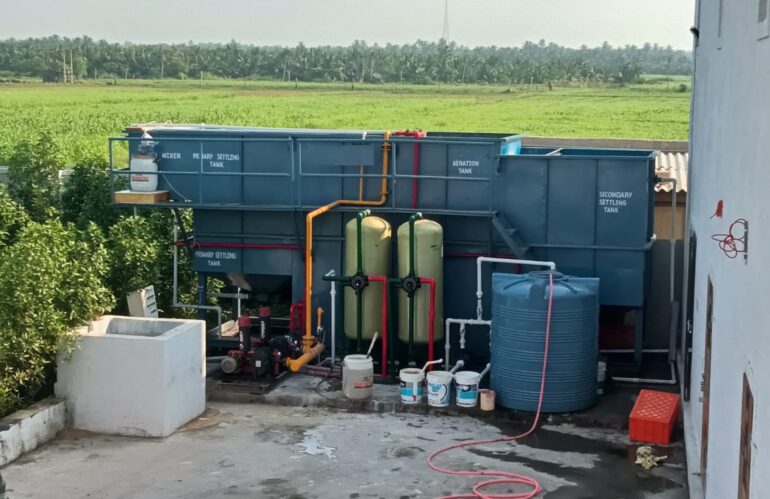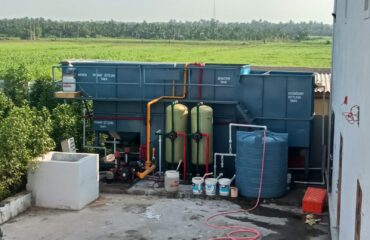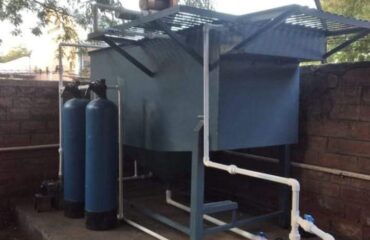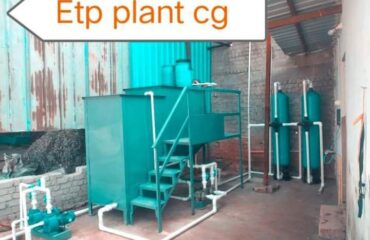In the modern landscape of rapid urbanization and industrialization, the management of wastewater and its environmental impact are of paramount importance. An Effluent Treatment Plant (ETP) stands as a pivotal solution to address the challenges posed by industrial growth, especially in cities like Jamnagar.
Understanding Effluent Treatment Plants (ETPs)
An Effluent Treatment Plant, abbreviated as ETP, is a sophisticated facility designed to treat and purify industrial wastewater before releasing it into the environment. The primary objective of an ETP is to eliminate pollutants and contaminants from the wastewater, ensuring compliance with stringent environmental standards and minimizing ecological harm.
The Role of ETPs in Jamnagar
Managing Industrial Wastewater
Jamnagar, a city renowned for its industrial activities, faces the challenge of managing the substantial volume of wastewater generated by its diverse industries. The Effluent Treatment Plant in Jamnagar plays a crucial role in treating this wastewater to reduce its adverse impact on the environment.
Environmental Protection
By removing pollutants from industrial wastewater, the ETP in Jamnagar contributes to the preservation of local water bodies, soil quality, and air purity. This is particularly important in urban areas like Jamnagar, where the delicate balance between industrial progress and environmental conservation is a pressing concern.
Components of an Effluent Treatment Plant
Pre-Treatment
The treatment process begins with pre-treatment, during which large solid particles and debris are removed from the wastewater. This initial phase prevents damage to subsequent equipment and ensures the efficiency of subsequent treatment processes.
Primary Treatment
In the primary treatment phase, physical processes such as sedimentation and flotation are employed to separate suspended solids from the wastewater. This step significantly reduces the organic load carried by the water.
Secondary Treatment
Biological processes are harnessed during the secondary treatment phase. Microorganisms break down organic matter and pollutants present in the wastewater, leading to further purification.
Tertiary Treatment
The tertiary treatment stage employs advanced techniques like chemical coagulation, filtration, and disinfection. These methods elevate the quality of the treated water, often making it suitable for non-potable purposes.
Advantages of an ETP
Pollution Reduction
The primary advantage of an ETP is its ability to reduce pollution. By treating industrial wastewater before discharge, these plants prevent the contamination of water bodies and soil, safeguarding the environment.
Regulatory Compliance
Industries that operate ETPs demonstrate their commitment to environmental regulations. This not only prevents legal penalties but also enhances the industry’s reputation as a responsible and sustainable entity.
Future Prospects and Sustainability
Technological Advancements
As technology evolves, ETPs can integrate innovative solutions to improve the treatment process’s efficiency and effectiveness, ensuring better wastewater treatment outcomes.
Public Awareness
Raising awareness among industries and the general public about the significance of ETPs can garner increased support for their implementation and proper operation.
Conclusion
The Effluent Treatment Plant in Jamnagar exemplifies the city’s commitment to harmonizing industrial growth with environmental responsibility. By treating industrial wastewater and reducing pollution, this plant plays a pivotal role in ensuring a cleaner, healthier future for Jamnagar. As the city progresses, the adoption of advanced ETP technologies and heightened public awareness will be crucial in creating a sustainable and vibrant urban landscape.




